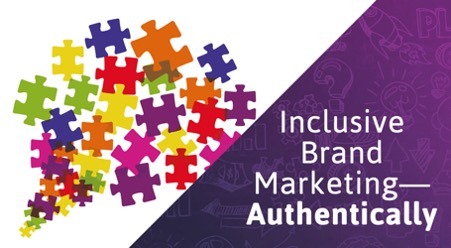#InclusiveMarketing
Text
Nurturing Nano and Micro Influencers in the Age of Paid Social Media Ads
In the ever-changing world of digital marketing, the rise of paid social media ads has undoubtedly transformed the landscape. As businesses embrace the power of these ads to reach wider audiences, we can't overlook the impact on our beloved nano and micro influencers. These passionate content creators, with their authentic voices and devoted followings, are facing new challenges in this competitive realm. In this blog post, we delve into how we can support and uplift our nano and micro influencers amidst the growing popularity of paid ads.
Celebrating Authenticity:
While paid ads offer businesses a quick and effective way to share their message, the essence of influencer marketing lies in authenticity. Nano and micro influencers are cherished for their genuine connections with audiences and niche expertise. As we embrace paid ads, let's not forget the importance of celebrating these influencers' authenticity and keeping their voices alive.
Fostering Community:
In our quest for wider reach, we mustn't overlook the value of building a tight-knit community. Nano and micro influencers have loyal followers who trust their recommendations like a friend's advice. By nurturing these communities, we create spaces where genuine conversations thrive, fostering deeper connections and loyalty.
Embracing Collaboration:
Paid social media ads and influencer collaborations need not be at odds. Instead, let's embrace a harmonious approach that combines both strategies to amplify the impact of brand messages. Collaboration between brands and nano/micro influencers can bring heartwarming stories to life, creating lasting emotional connections with audiences.
Championing Long-Term Relationships:
In this fast-paced digital age, we cherish the enduring relationships between influencers and brands. By nurturing long-term partnerships, we ensure that nano and micro influencers remain cherished brand ambassadors, fostering trust and authenticity in every campaign.
Emphasizing Diversity:
As we explore the magic of paid ads, let's remember that influencers of all sizes have unique value to offer. Emphasizing diversity in our marketing strategies allows for authentic stories from voices across the spectrum, connecting with audiences on a personal level.
In conclusion, in this digital era of innovation, it is essential that we extend warmth and compassion to our nano and micro influencers. While paid social media ads bring undeniable benefits, let's continue to celebrate the authenticity, passion, and uniqueness of these cherished creators. By nurturing a loving and inclusive space for influencers, we can strike a harmonious balance between paid ads and influencer marketing, creating memorable campaigns that touch hearts and inspire minds. Together, we can uplift our influencers and bring warmth and compassion to every digital touchpoint, ensuring that their influence continues to shine brightly in the hearts of audiences worldwide.
#DigitalMarketing#SocialMediaAds#SupportInfluencers#InclusiveMarketing#InfluencerMarketing#CommunityEngagement#EmbraceAuthenticity#DigitalBrandStrategy
3 notes
·
View notes
Text
Why are there no more TV commercials for toddlers with disabilities?

The Shift in Representation: Why We See Fewer TV Commercials Featuring Toddlers with Disabilities
The landscape of television advertising, particularly for products aimed at children, has undergone significant changes over the past few decades. While commercials featuring toddlers with disabilities were once more prevalent, their presence has become less frequent. This shift reflects a broader societal evolution in representation and inclusivity. Let's explore some possible reasons behind this decline:
1. Moving Beyond Inspiration:
Shifting Focus: Early commercials featuring children with disabilities often leaned heavily on the "inspirational" narrative. The focus was on overcoming challenges, with the product playing a secondary role in aiding this triumph. This approach, while well-intentioned, could be seen as patronizing and fail to resonate with viewers who desired a more nuanced portrayal.
Authentic Representation: There's a growing emphasis on authentic representation in advertising. Audiences expect to see children with disabilities simply being children – playing, laughing, and enjoying their lives – instead of solely defined by their disability.
2. Targeting the "Real" Decision-Makers:
Parental Influence: Decisions about children's products are often made by parents or caregivers. Advertisers are increasingly targeting this demographic directly. Instead of focusing solely on the child's experience, commercials might highlight how the product benefits both the child and the caregiver, offering solutions to real-life challenges parents face.
Focus on Product Functionality: Modern commercials tend to take a more product-centric approach. The emphasis is on showcasing the features and benefits of the product in a clear and engaging way. This allows parents to assess how the product can specifically address their child's needs, regardless of ability.
3. The Rise of Social Media and Targeted Advertising:
Micro-Targeting: The rise of social media and targeted advertising allows companies to tailor messages to specific demographics. Instead of relying on mass-market television commercials, companies can reach niche audiences (including parents of children with disabilities) through online platforms and create more relevant, targeted messaging.
There are a few reasons why you might not see as many TV commercials featuring toddlers with disabilities:
Shifting Advertising Strategies: Advertising has moved heavily online, with targeted social media campaigns often replacing traditional TV commercials.
Focus on Authenticity: Modern marketing might favor featuring real families in their everyday moments, potentially showcasing disability in a more natural way.
Evolving Representation: The emphasis might have shifted towards inclusive casting across various media, where disability becomes a part of the character rather than the sole focus of the advertisement.
Influencer Marketing: Influencer marketing, where trusted individuals promote products online, has gained traction. Parents of children with disabilities might be sought out to showcase how a product works within their everyday lives, offering a more relatable and authentic perspective.
The Future of Representation:
Moving Towards Inclusion: The decline of commercials featuring toddlers with disabilities purely for "inspirational" purposes doesn't translate to a lack of inclusion. Instead, it signifies a shift towards more genuine and diverse portrayals.
Inclusion as the Norm: The goal is for inclusivity to become the norm, where children with disabilities are naturally represented in advertising alongside their peers without disabilities. This reflects the reality of classrooms, playgrounds, and families everywhere.
Ultimately, the advertising landscape continues to evolve. While television commercials featuring toddlers with disabilities might be less frequent, the broader conversation about representation and inclusivity remains ongoing. The goal is to create a world where all children see themselves reflected in the media they consume, celebrating individuality and the value of every member of society.
#•#DisabilityRepresentation#InclusiveMarketing#WeNeedMore#DisabilityInMedia#RepresentationMatters#ChangingTheNarrative#DisabilityAndChildhood#ToddlerLife#WhereAreTheKids#EarlyRepresentation#RepresentationStartsYoung#DisabilityPride#MarketingQuestion#DiversityInAdvertising#LetsTalkAboutIt#WheresTheInclusion#FoodForThought#RepresentationGoals
0 notes
Text
Tweeted
Participants needed for online survey! Topic: "Exploring The Influence Of Diversity within the Fashion Industry" https://t.co/vjiB8yU1DQ via @SurveyCircle #bournemouthuni #InclusiveMarketing #FashionIndustry #diversity #BodySizes #ModelSizes https://t.co/05rVRoqHkl
— Daily Research @SurveyCircle (@daily_research) May 10, 2023
0 notes
Text
How to Have More Inclusive Brand Marketing—Authentically

Add Diversity to Your Brand with Integrity & Honesty
In recent years we’ve been hearing more and more about diversity and inclusion (D&I) in the workplace. The words “diversity” and “inclusion,” are similar, but they don’t have the exact same meaning.
The well-known diversity advocate Vernā Myers explains it as, “Diversity is being invited to the party. Inclusion is being asked to dance.”
Inclusive brand marketing is similar to D&I, minus the HR department. It refers to how you represent people from various backgrounds in all forms of your advertising. That means considering factors such as:
• Age
• Ethnicity
• Gender
• Sexuality
• Appearance
Beyond making your customers feel represented, inclusive brand marketing can help you:
• Reach more potential clients
• Build loyalty and trust
• Boost social media and website engagement
• Increase leads and sales
From your website to your Instagram feed, inclusive marketing can be an integral part of your marketing strategy—but only if you’re doing it authentically.
Let’s look at three ways to add diversity to your brand in an honest, approachable way.
1. Cater to your target audience, not to everyone.
Inclusive marketing isn’t about trying to find a stock photo with every possible demographic crammed into it.
Instead, it’s about knowing your business inside and out, and making sure that your target audience is well-represented in your marketing campaigns.
Remember: Your customers can tell the difference between a forced attempt at inclusion, and one that’s genuine.
And if they feel represented in a real way, they’ll likely be more motivated to support your small business. According to the 2019 consumer survey by Google and The Female Quotient, 64% of all respondents took some action after seeing an ad they considered to be diverse or inclusive.

How one of our clients, Uniquely Royal, authentically represents their audience on Instagram.
2. Stay true to your brand.
You may remember the Dove Real Beauty campaign. Their first ad featured a fresh-faced woman sitting down and having her hair and makeup professionally done before her images were digitally retouched and put on a billboard.
Of course, she looked incredibly different from start to finish, with the idea being that what we see in magazines, on TV and online is not reality.

Dove has since built their marketing upon this concept, using women of all backgrounds, shapes and sizes in their campaigns and vowing not to digitally retouch images.
I’m using this example not because I want you to be like Dove. I want you to take a long, hard look at your business’ identity.
If you don’t sell plus-size clothing, including a bigger woman in your advertising will fall flat. If you do sell plus-size clothing, using a thin model will alienate your customers.
Again, it all goes back to having a deep understanding of who’s engaging with your business.
READ: The Importance of Brand Messaging for a Successful Website Redesign

I’m sure you’ve landed on someone’s website and felt like something was just…wrong; or maybe you were suddenly turned off without even knowing why.
Chances are, you quickly clicked back to find a competitor’s website, where you felt more comfortable and secure.
Your visitors could feel the same way if you don’t pay attention to how you come across to your target audience.
In this article, I’m going to share 5 questions you need to answer to determine your business identity and create the most effective website possible.
Read more.
3. Always be empathetic.
In order to reach your customers, you need to tell relatable stories, not just sell products or services.
Discover what your target customers’ likes, needs and pain points are. How will your product or service make a difference in their lives?
Once you’ve got an idea of what makes them tick, tell that story through empathetic marketing. Empathetic marketing means putting yourself in your customers’ shoes to better serve them.
And unlike sympathy, which is feeling compassion, empathy means imagining yourself in another person’s situation.
Your audience wants their needs to be understood and acknowledged. And that goes beyond a multicultural stock photo.
Maybe it’s interviewing an expert who is from the demographic you want to represent, or highlighting testimonials from real people who use your product or service.
How to Add Diversity to Your Brand Every Day
As marketers, we need to continuously evolve our strategy (or pivot completely!) Going forward, that will also need to include more inclusive marketing.
Your customers want to feel like you authentically understand them. More and more, consumers are interacting with companies not just because they want to buy something, but because they share that brand’s beliefs and values.
So research your target audience. Dive deep into your data. Listen to what your customers are saying, whether it’s online reviews or social media comments.
Make a commitment to try and do better each and every day to help your customers believe in your brand!
To your business success,
Susan Friesen
0 notes
Text
Inclusive Marketing resource delivers more Value

Currently, brand values are a part of your USP. #InclusiveMarketing underscores common struggles and Humanity.
0 notes
Text
Sonia Thompson, Masters(She/Her)Purpose Driven First Level Management Professional JSweet4Evernow • Just nowAn Afro-Latina! I have one Spanish parent and one African that makes me Afro-Spanish. We have been saying for months that Afro-Latinas have two Spanish parents and African ancestry. #afrospanishSonia Thompson(She/Her) • FollowingInclusive Marketing Strategist | I help brands win the loyalty of consumers most brands ignore2w • 2 weeks agoA few months back I came across a TikTok of a woman who was out at a restaurant celebrating her birthday with loved ones.
The wait staff brought out a dessert to celebrate her.
The most remarkable part in all this, was that the chef had written "Happy Birthday" on the cake plate in braille in melted chocolate.
The woman was visually impaired.
And when it was brought to the chef's attention, he took a little bit of extra time to "see" the woman, and let her know that she belonged there.
The birthday girls was delighted. I got all choked up watching.
And it was a lovely reminder that taking even just a little effort to see others, especially those with differences who are so accustomed to being unseen, goes a long way and leaves a lasting impact.
Not just on the recipient of your efforts, but to everyone else who was witness to it.
Today is World Braille Day.
Let us take the time to celebrate, support, and make our visually impaired friends, customers, and partners feel like they belong.
Not only on this day - a designated day to celebrate them. And not just on their birthday.
But everyday.
Have you seen any cool ways brands have incorporated braille into their customer experience?
#worldbrailleday
#inclusivemarketing
#customerexperience
#belonging
0 notes